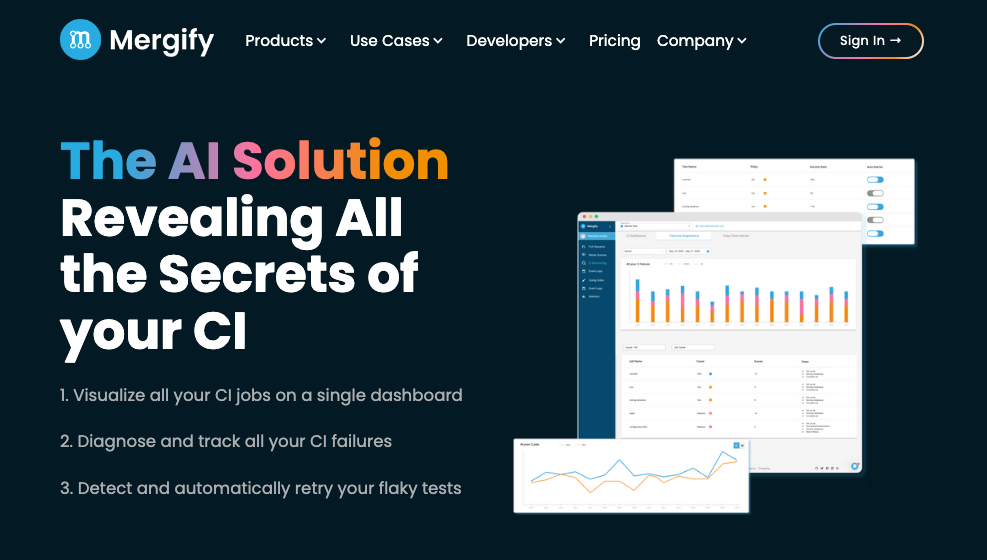
The Importance of CI/CD Metrics and How to Use Them
This article delves into the importance of CI/CD metrics and guides you on effectively using them.
Continuous Integration and Continuous Delivery have emerged as pivotal practices in the evolving software development landscape.
These methodologies streamline the process from code development to deployment, ensuring a swift, reliable, and efficient workflow.
However, to truly harness the power of CI/CD, understanding and utilizing CI/CD metrics is crucial.
This article delves into the importance of these metrics and guides you on effectively using them.
Understanding CI/CD Metrics
CI/CD metrics are quantitative measures that provide insights into the efficiency, effectiveness, and overall health of the CI/CD pipeline. These metrics help teams to identify bottlenecks, improve processes, and ensure the delivery of high-quality software.
Key CI/CD Metrics
- Build Duration: The time taken to complete a build. This is crucial for identifying delays in the pipeline.
- Deployment Frequency: How often deployments occur. High frequency typically indicates a more agile and responsive development process.
- Change Lead Time: The time from code commit to deployment. Shorter lead times can suggest a more efficient CI/CD process.
- Change Failure Rate: The percentage of deployments causing a failure in production. A lower rate indicates higher quality and stability of releases.
- Mean Time to Recovery (MTTR): The time taken to recover from a failure. Faster recovery is indicative of a robust and resilient system.
Why CI/CD Metrics Matter
CI/CD metrics are not just numbers; they are indicators of the health and performance of your software development lifecycle. Here’s why they matter:
Enhanced Visibility
Metrics provide visibility into the CI/CD pipeline, allowing teams to understand how changes in code impact the overall workflow. This visibility is essential for making informed decisions and improvements.
Improved Efficiency
By tracking metrics like build duration and change lead time, teams can pinpoint inefficiencies and work towards optimizing processes, resulting in faster and more efficient development cycles.
Quality Assurance
Metrics such as the change failure rate help in maintaining the quality of the software. They enable teams to identify and address issues early, reducing the risk of major failures post-deployment.
Better Resource Management
Understanding the performance of your CI/CD pipeline through metrics allows for better allocation and management of resources, whether it's human expertise or infrastructure.
Implementing CI/CD Metrics
Implementing CI/CD metrics involves more than just tracking numbers. It requires a strategic approach to ensure that the metrics provide meaningful insights.
Choose Relevant Metrics
Select metrics that are most relevant to your team’s goals and the nature of your projects. Not all metrics will be equally important for every team.
Use the Right Tools
Utilize CI/CD tools that offer comprehensive metric tracking capabilities. Tools like Jenkins, CircleCI, and GitLab provide extensive analytics for your CI/CD pipeline.
Regular Reviews
Regularly review and analyze the metrics to track progress and identify areas for improvement. This should be a continuous process to adapt to changes in the development lifecycle.
Foster a Metrics-Driven Culture
Encourage a culture where decisions are made based on data and metrics. This ensures that improvements are objective and aligned with the overall goals of the organization.
Introducing Mergify CI Issues – The Game Changer
While solutions like Datadog CI Visibility give you access to data and insights, you still need to interpret them and do manual actions. We decided to change that with CI Issues, a new product that, additionally to giving you number analysis, will act to save you time and money.
Why Mergify CI Issues?
Mergify CI Issues takes CI/CD visibility to the next level. With advanced analytics and machine learning capabilities, it provides predictive insights into your CI/CD pipeline's performance, allowing you to proactively address issues before they impact your workflow.

Let's go deeper into some CI Issues features:
Logs Analysis
Leveraging the power of AI, CI Issues delves deep into logs, providing developers with real-time feedback and actionable insights. Once analysis is over, it's time for CI Issues to classify your tests.
Classify and Understand CI Failures
CI failures are annoying, especially when you don't know where they come from or why they happened. The Failure Diagnosis feature allows you to identify the root causes of failure.
- Identify and record all failures.
- Understand root causes: infra, network, or tests.
- Find out how to avoid these failures faster.
Automatic Retries
When diagnosing failures, our AI is able to detect the flaky tests present in your suite. While waiting to repair them definitively, the Flaky Retrier feature lets you choose which tests CI Issues should automatically re-run.
- Our AI detects and spots flaky tests.
- Highlighting the pass/fail rate for each test.
- Decide which tests to automatically retry.
Universal Integration
CI Issues is agnostic. In other words, it works and interfaces perfectly with all CI tools and test frameworks. You won't need to configure it for every framework in your test suite.
- Enable CI Issues.
- Set it up once and for all.
- Let AI do the work.
More than just an error tracker, join the waiting list to be among the first to use CI Issues.
Conclusion
CI/CD metrics are more than just performance indicators; they are the compass that guides the software development process toward efficiency, quality, and excellence.
Organizations can achieve a streamlined, robust, and responsive CI/CD pipeline by understanding, implementing, and utilizing these metrics effectively. To succeed, solutions like Mergify CI Issues can be very helpful.
Remember, the key to success in CI/CD is not just in executing the processes but in measuring and optimizing them continuously.



